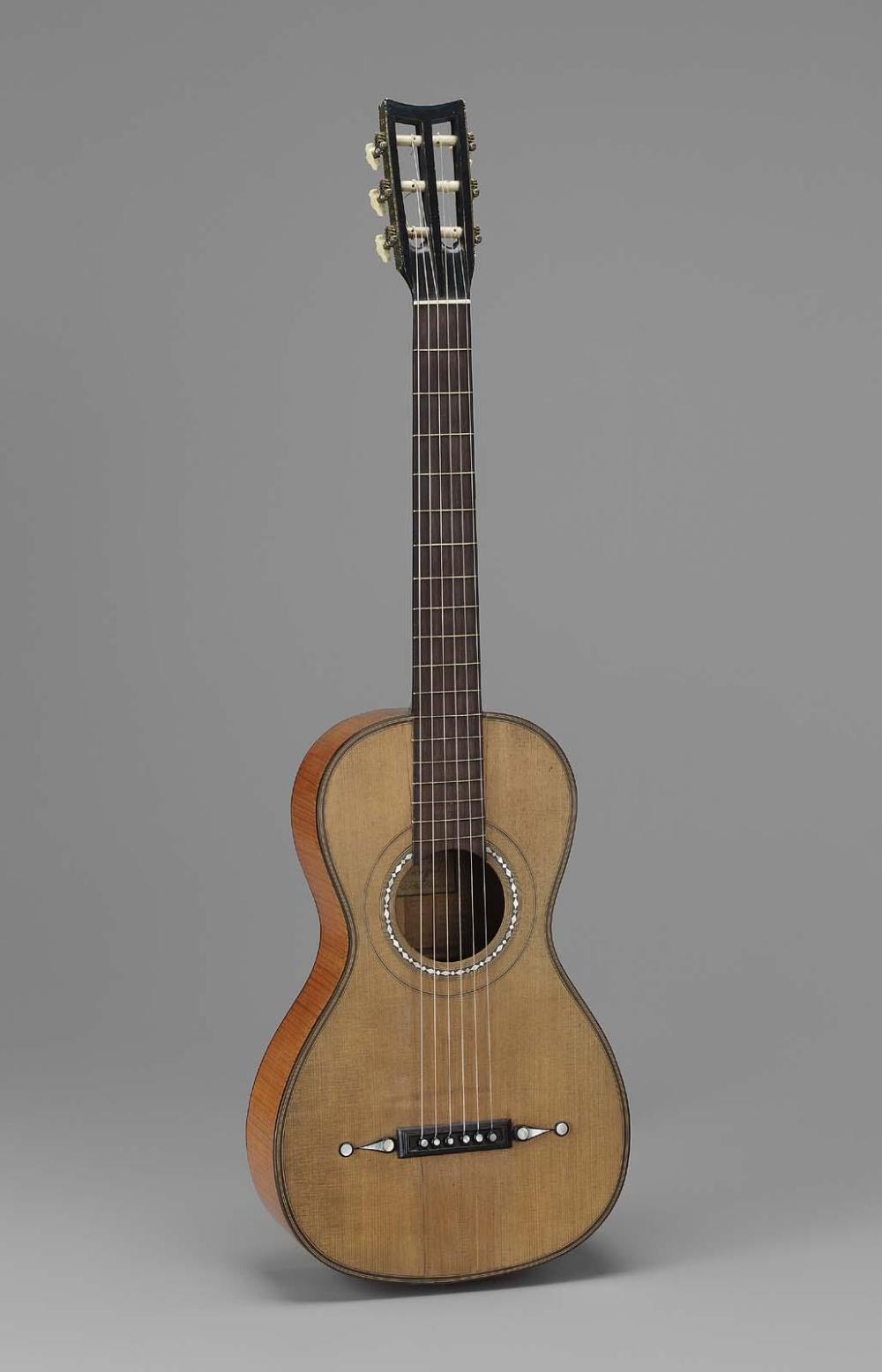Advanced Search
Guitar
Louis Panormo (English, 1784–1862)
1830
Object Place: London, England
Medium/Technique
Maple, spruce, cedar, pearwood (?), rosewood, mother-of-pearl, ebony, ivory, brass, steel, sheep gut, silver
Dimensions
Length 92 cm, width 29.1 cm (Length 36 1/4 in., width 11 7/16 in.)
Credit Line
Museum purchase with funds donated by Bradford M. and Dorothea R. Endicott and an anonymous donor
Accession Number2000.635
NOT ON VIEW
CollectionsEurope, Musical Instruments
ClassificationsMusical instruments – Chordophones
DescriptionTwo-piece back and ribs of maple. Belly of fine-grain spruce. Binding of ebonized pearwood. Multi-line purfling around edges of belly and soundhole. Rosette composed of pearl in diamond shapes. Neck and headstock of ebonized cedar. Tuning machines of brass and iron with knobs of ivory; stamped RANCE. Fingerboard of rosewood with eighteen frets of brass. Nut of ivory. Bridge of ebonized pearwood, terminating in pearl-covered exclamation points. Bridge pins of ebony. Internal construction: Two lateral braces on back and three on belly (one above soundhole). Original case of wood lined with red wool.
InscriptionsPrinted label: [handwritten: 1820] / Panormo Fecit / Anno 18 [handwritten: 30] London / 40 High Street, Bloomsbury.
ProvenanceAbout 1991, sold by Terenzio, a violin dealer, Pennsylvania, to Bernard E. Lehman, Rochester, New York; about 1991, sold by Lehman to John Wiesenthal, Rochester, New York; 2000, sold by Wiesenthal through Lehman to the MFA. (Accession Date: May 24, 2000)
Etude, Opus 6, No. 11, about 1810–23
Composed by Fernando Sor
Performed by Olav Chris Henriksen


